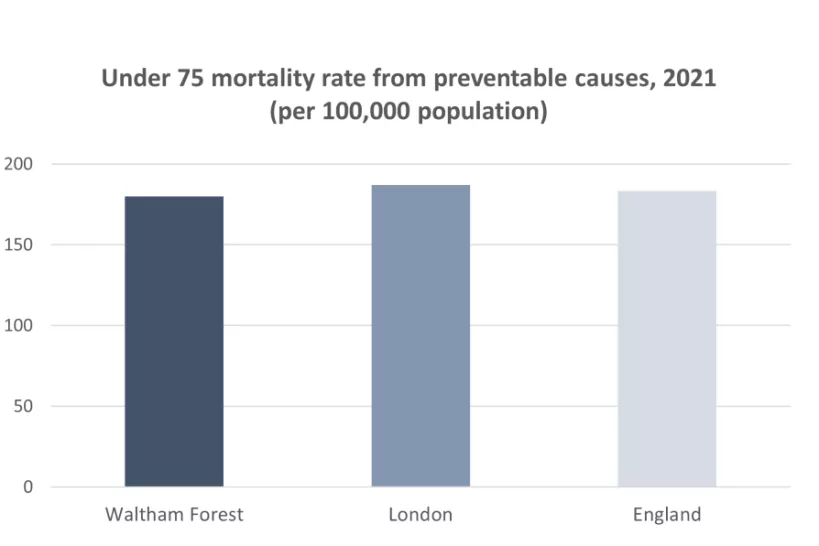Last updated: 3 June 2024
Next review: 3 December 2024
This content is part of the Waltham Forest JSNA. To see other JSNA content, visit the JSNA landing page
Premature mortality includes deaths occurring under the age of 75. Preventable mortality is defined as deaths where all or most deaths could potentially be avoided through effective public health interventions. COVID-19 has also been assigned as a preventable cause of death [1].
Waltham Forest has a lower rate of preventable mortality in people aged under 75 compared to the England and London averages, though differences are not statistically significant. In 2021, 179.8 deaths per 100,000 population were considered preventable in Waltham Forest by the Office for National Statistics’ (ONS) analysis, compared to 186.9 per 100,000 in London and 183.2 per 100,000 across England.

Source: OHID Public Health Outcomes Framework. Data based on Office for National Statistics source data. Date accessed: 07 June 2023.
It is not possible to directly compare current figures to previous trends, as the most recent data is based on the new population estimates derived from the 2021 Census. Previous data showed a downward trend, with rates of premature mortality from preventable causes falling by approximately 25% from 2001 to 2020 in England, with Waltham Forest following the same general trend. [2]
National data from 2021 shows that preventable premature mortality correlates strongly with levels of deprivation, with the under 75 mortality rate from preventable causes being more than twice as high in the most deprived local authority areas (274.4 per 100,000) compared to the least deprived areas (128.8 per 100,000).
References
[1] Office for National Statistics. Avoidable mortality in Great Britain: 2020. Date accessed: 07 June 2023.
[2] OHID Fingertips - Public Health Outcomes Framework. Date accessed: 04 June 2023